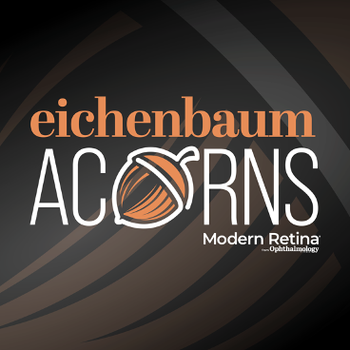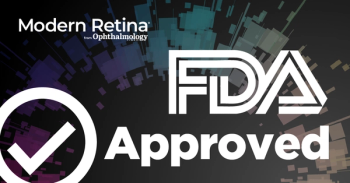
Both therapeutics will leverage AGC Biologics’ BravoAAV suspension platform and use an innovative dual AAV vector approach, which splits the therapeutic gene into 2 halves.

Both therapeutics will leverage AGC Biologics’ BravoAAV suspension platform and use an innovative dual AAV vector approach, which splits the therapeutic gene into 2 halves.

EyePoint Pharmaceuticals' DURAVYU trials for wet AMD receive positive DSMC review, highlighting safety and potential for improved patient outcomes.

The two meetings will be held concurrently from December 4-7 in Florence, Italy.


For Jordan M. Graff, MD, FACS, early adoption is about reigniting the thrill of discovery and navigating the rewards, risks, and realities of translating innovation into practice.



Chhablani discusses key findings on retinal vasculitis from the FAERS database, highlighting trends and safety in intravitreal treatments.

CoTx-10 is intended for the treatment of retinal vascular diseases, such as wet age-related macular degeneration (wAMD) and diabetic macular edema (DME).

RUSH2A is an ongoing natural history study for patients with mutations in the USH2A gene causing Usher syndrome type 2A or nonsyndromic retinitis pigmentosa (RP).

Best disease, also known as vitelliform macular dystrophy, is a rare, inherited retinal condition causing macular degeneration by mutations in the BEST1 gene, leading to progressive vision loss and potentially blindness.

Kenneth C. Fan, MD, discusses promising visual improvements from MCO-010 therapy for Stargardt disease at AAO 2025, highlighting future treatment potential.

Anat Loewenstein, MD, discusses the transformative impact of home OCT and AI on monitoring retinal diseases at AAO 2025.

In the study, authors investigated the natural history of GA lesion incidence rates and analyzed potential risk factors for faster incidence of GA lesions.

OPGx-LCA5 is designed to address a form of Leber congenital amaurosis that results from biallelic mutations in the LCA5 gene, which encodes the lebercilin protein, the investigators explained.

New five-year data reveals SYFOVRE significantly delays geographic atrophy progression, enhancing understanding of age-related macular degeneration treatment.

Research on aflibercept 8 mg reveals promising real-world outcomes for treating wet AMD and diabetic macular edema, enhancing vision and safety.

PolyActiva and RareSight collaborate to create innovative therapies for rare pediatric retinal diseases, aiming to transform treatment and improve children's vision.

Stephen Tsang, MD, PhD, reviews promising optogenetic therapy results for retinitis pigmentosa and Stargardt disease, enhancing vision and mobility for patients.

This resubmission follows the complete response letter (CRL) Outlook received in August 2025.

Ophthalmologists weigh in on how the extended-duration therapy may reduce treatment burden for patients with wet age-related macular degeneration.

Sharon Fekrat, MD, FACS, FASRS, shares insights on the retinal manifestations of antipsychotic medications.

The EXTEND study is a 5-year follow-up of participants who received a single intravitreal injection of MCO-010 in a previously conducted phase 1/2a trial.

The trial is evaluating 4D-150 in patients with wet age-related macular degeneration (wet AMD).

The funding will support the completion of the clinical PoC of its AAVB-039 CELESTE study and the completion of the STELLA natural history study.

Under the terms of the agreement, 4DMT will grant Otsuka exclusive rights to develop and commercialize 4D-150 for retinal vascular diseases in Japan, China, Australia, and other Asia-Pacific markets.

Catch up on this week's highlights in retina.

The trial will be evaluating AXPAXLI dosed every 6 months vs aflibercept (2 mg) dosed every 8 weeks in treatment-naive patients with wet AMD.

A mutation-agnostic gene therapy approach offers new possibilities for patients, especially those with inherited retinal diseases.

NYRVANA is the first-in-human trial and is an open-label, multicenter, dose-escalation study investigating the safety, tolerability, and preliminary efficacy of a single intravitreal injection of SPVN20 over 6 months.